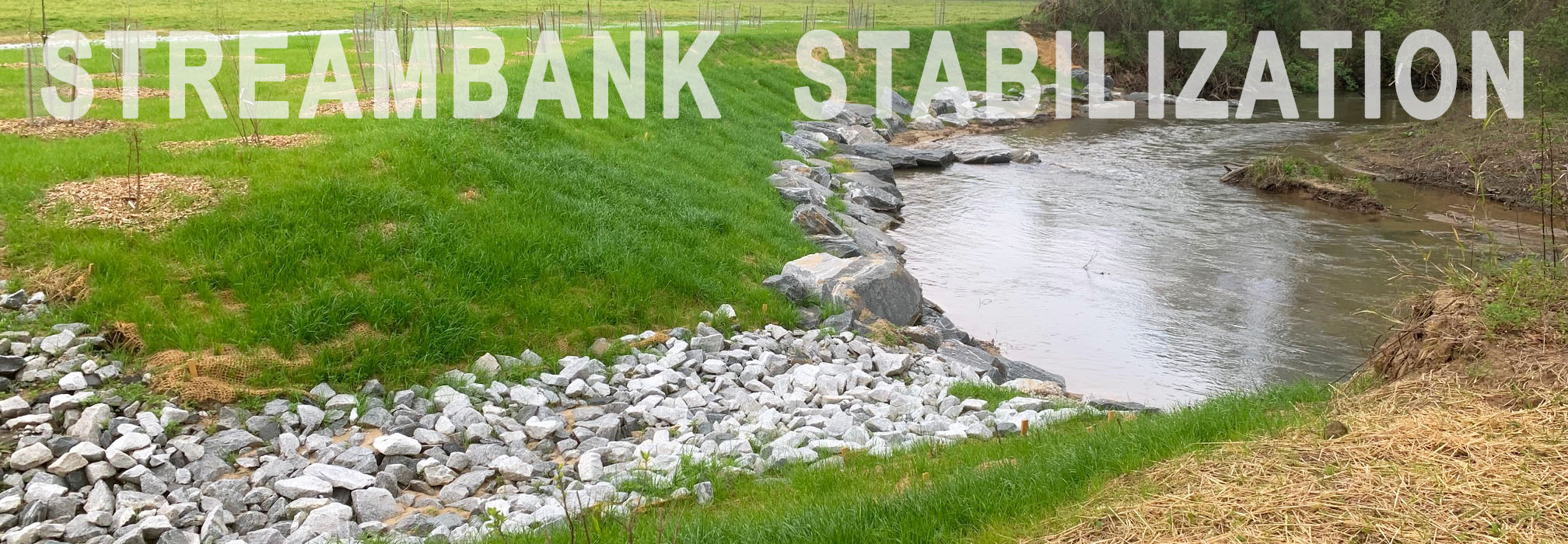
Streambank stabilization refers to a variety of techniques and practices used to prevent erosion along the banks of streams and rivers. This process involves using natural or engineered structures to maintain the integrity of the streambank, prevent soil loss, and reduce sedimentation in the waterway. Factors to consider when determining the best method for stabilizing and protecting a stream bank include the size and location of the stream as well as the cause and severity of the erosion. In many cases, the best approach is to use a combination of techniques.
Techniques for Streambank Stabilization
- Vegetative Methods: Planting native grasses, shrubs, and trees along the streambank. The roots of these plants help to hold the soil in place, absorb excess water, and reduce erosion. Streams with well-established vegetation on their banks provide for better water quality and wildlife habitats. Vegetation is extremely important for the biological, chemical and physical health of the stream as well as the stability of the system.
- Structural Methods: Using physical structures such as riprap (rock armor), gabions (wire mesh filled with rocks), and retaining walls to protect the bank from eroding forces.
- Bioengineering: Combining living plants with structural techniques, such as using live stakes or fascines (bundles of branches) to stabilize the bank.
- Soil Bioengineering: Utilizing natural materials like logs, live plant materials, and soil to create structures that stabilize the bank.
Benefits to the Environment
- Erosion Control: Stabilized streambanks prevent soil from washing into the water, reducing sedimentation, which can harm aquatic habitats and water quality.
- Improved Water Quality: Reducing sedimentation helps maintain clearer water, which supports healthy aquatic ecosystems and improves conditions for fish and other wildlife.
- Habitat Enhancement: Planting native vegetation provides habitat and food for wildlife, including birds, insects, and aquatic species.
- Flood Management: Stabilized banks can help manage water flow and reduce the impact of flooding by maintaining the natural shape and course of the stream.
- Aesthetic and Recreational Value: Healthy streambanks enhance the beauty of natural areas, providing recreational opportunities and increasing the aesthetic value of the landscape.
When done correctly, stream stabilization and restoration have some of the lowest maintenance requirements of any green infrastructure project. They are both essential practices for maintaining healthy waterways and supporting the surrounding ecosystem.